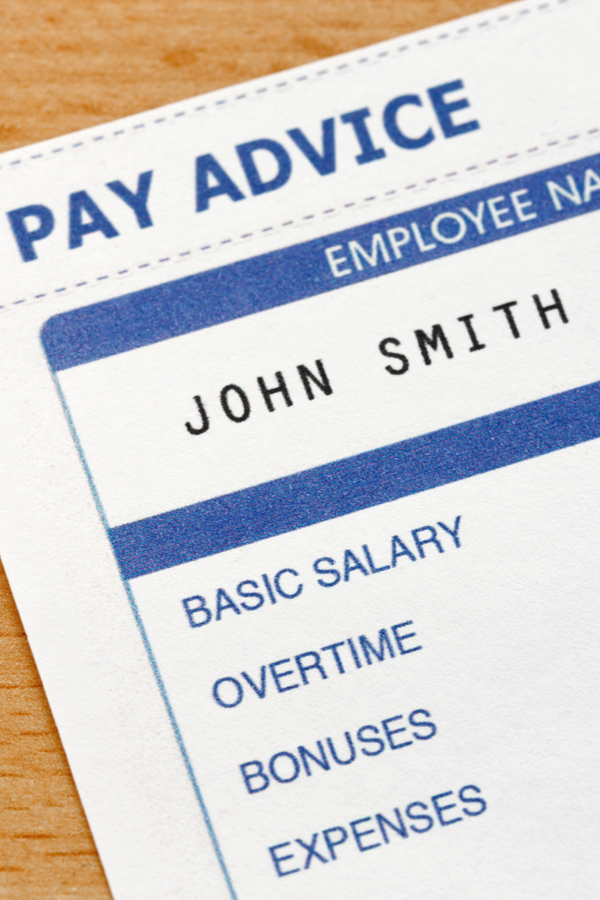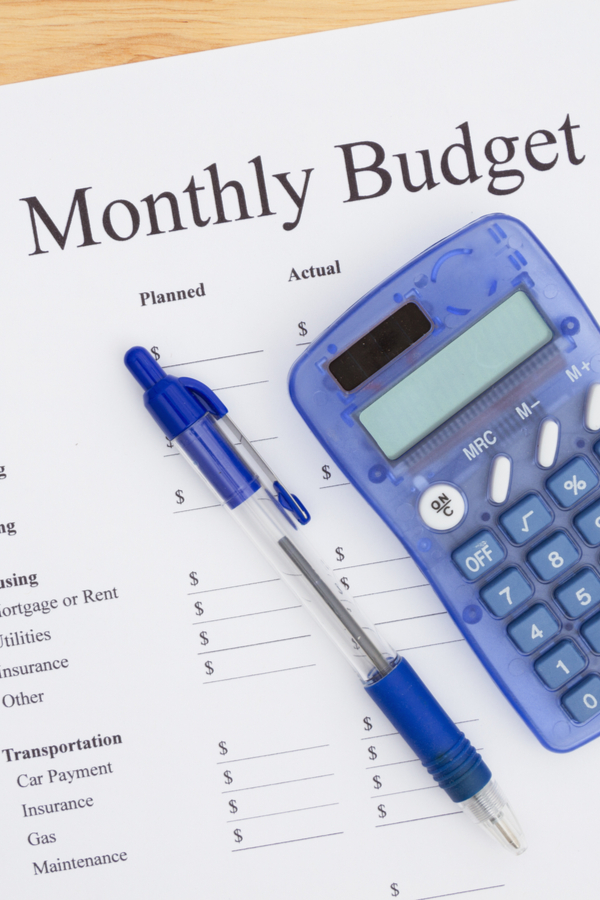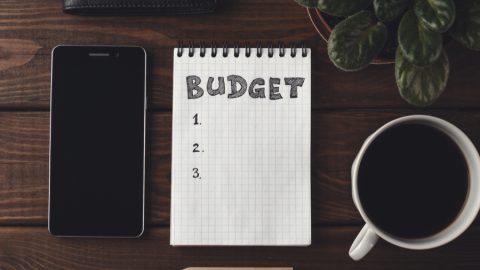Creating a budget is something that most of us know that we should do. However, if you are like most people you probably don’t even know where to begin to start saving money. Fortunately there are a few simple tips and tricks that you can follow to make this process easier than you think.
At the beginning of each year many of us make a New Year’s resolution to spend less and save more. The meaning and purpose of this goal will be different for each person.
Some of us want to save money for that dream vacation that we have always wanted to take. While others are trying to put back a little extra cash in their savings account for retirement someday.

However, regardless of your purpose of saving more and spending less, an action plan needs to be in place. And not just any action plan. It needs to be one that is not only reasonable, but sustainable as well.
The Typical Budget Scenario
We have all been there. We set up a budget plan at the beginning of the year. And we are confident that this will finally be the time that we will see extra cash slowly accumulating in our bank accounts.
We then promise to eat at home more often and not go through the drive thru at our favorite restaurant. Or we commit to having one or two less Frappuccinos at our favorite, local coffee shop. We even limit our spending online and promise to purchase only items that we absolutely need.
However, mid to late January, the Christmas spending bills begin to arrive. And you have to put extra money towards paying off that debt. Then the increase in electric and gas bills from winter’s arrival start to roll in.
By the end of February or March when we go to look at our bank accounts, we don’t immediately see anything indicating that we are saving money. In fact, you most likely will see that your spending has actually increased, despite your efforts to eat at home and spend less.
Not only is this frustrating, it is the reason that most people throw their budget aside. And in turn, go back to their old habits. However, with just a few simple tips and tricks, you will not only create a budget that works for you, it will also be one that you can actually stick to!
6 Tips To Create A Budget
Step 1: Identify your Income
This may sound like an obvious step, but before you can identify how much money you can save, you have to determine how much income that you are generating.
It doesn’t matter if you get paid weekly, biweekly or monthly. What you need to calculate is how much, on average, that you make and bring home every month of the year.
This seems pretty easy for those who have a salary position that pays the same every pay period. However, it is a little more difficult for those whose income fluctuates. This is especially true if you are an hourly employee or work in an industry that is paid by the job.
The best way to determine your average monthly salary is to review your bank account. Document the payroll deposits that you made over the last year. Then simply add up the amount for the entire year and divide by 12.

*For those who receive tips as part of income, do the best you can to average those out as well. It is important to gather all of the income data that you can so you can be honest about what your average income is on a monthly basis.
Multiple Income Sources
For those who have multiple people in the house that contribute to the household budget, add in their income as well.
However, before you move to the next step to create your budget, be sure that you look beyond the obvious payroll income. Do you have other income coming in on a consistent basis that you need to consider?
Think about dividends, child support or other random income sources. Although be sure to record only guaranteed income sources. Bonuses that are based on sales or performance aren’t guaranteed and should not be considered.
Now that you have taken the time to determine your income, it is time for the hard part. The next step is to identify your monthly expenses.
Step 2: Identify Expenses
The second step in creating a budget is to figure out where you are spending your money. However, the first step in this process is actually pretty easy.
Start with reviewing and documenting your reoccurring monthly bills. These expenses are those that get billed either monthly or quarterly.
The most obvious expenses are mortgage/rent, car payments, insurance, and utility bills. However, be sure to take a close look at your bank statement to find those not so obvious payments that you make every month.
Think about video and audio streaming subscriptions. Or what about those extraneous data storage fees. Think about babysitting, membership fees to gyms, clubs, and any other monthly, quarterly, or even yearly expenses.
Go through your bank statements and document the type of service that you are paying for and also the amount. However, if it is a quarterly or annual fee, be sure to divide that amount so you can determine what you spend on that service on a monthly basis.
Now comes the more difficult part, identifying the miscellaneous expenses. Besides the bills that you pay over and over again, you must identify and categorize those ‘other’ expenses.

Other Expenses
These expenses are those that most often can be organized in these five categories: grocery, entertainment, restaurants, shopping and medical expenses. However, feel free to use additional categories that meet your specific spending habits.
Now go through your bank statement and/or receipts if you frequently use cash. Identify and log how much you spend in each category every month.
It is ideal to gather a year full of data. However a few months worth of documentation will give you a good start. Be sure to take into consideration any special events that occur as well. Wedding expenses, Christmas or even an emergency trip out of town, could skew the data.
Although, you must take those unexpected or even planned yearly expenses into account as well. You may even consider adding a miscellaneous category for these expenses.
As you are documenting your spending look for trends. For example, if you are eating at a certain restaurant several times a week, that might be an area to note and one where eventually you can save money.
Step 3: Set Realistic Goals
Now that you have identified your income sources and expenses, it is time to start analyzing the information in front of you.
But first, be sure to enter the information in a Budget Worksheet. Although you can purchase these type of programs to help you organize the data, you don’t have to spend any money to create a budget.
Instead, use Google Sheets to make your own spreadsheet. In one column, log your monthly income resources. Then, in the next column, list all of the reoccurring monthly expenses into the form.
This will include not only the household payments and utilities, but also the general expenditure categories that you have identified.
Now take some time to analyze the data. Where are you truly spending your money? What are the payments that aren’t negotiable? And where are you spending money where you could possibly cut back?
Talk it over, look at it several times for at least a week, and really determine what is important to you.

Step 4: Design Your Budget
Now that you have taken the time to organize and reflect on the information that you have gathered, it is time to prepare your budget.
It is very important to give yourself a week or two after gathering the data before setting up your specific budget. This will allow you time to not only think about what can be cut, but also, and more importantly, about what is important to you and your family.
If you rely on going to the gym for health, but also as an outlet for socialization because you have been working in a home office, then you might consider that a priority.
On the contrary, if you noticed a trend that you are spending money every morning at Starbucks, adding up to over 50 dollars a week, this might become a ‘wow’ moment for you.
Look at your expenses and decide where it is best to save some money. If you have a partner I highly recommend a long discussion of the budget, priorities and in the end, a mutual agreement on the process.
Document Your Budget Plan
Write down your budget plan by listing the amount that you need to budget every month, for every category. This includes the harder categories of grocery, entertainment, restaurants, etc.
However, be realistic. If you have spent $500 in groceries every month for the past 6 months, don’t assume that you can decrease that to $200. Yes, you can probably cut back on those unnecessary snack items because you have started your New Year’s diet, but you have to have the foresight to understand what your actual, anticipated spending will be.
Then decide what amount of money that you want to save, and identify where you will use those extra savings. It is okay if you want to divide the extra money into different categories, to reach multiple goals. Just be sure to allocate what percentage you want to go towards each goal.
Step 5: Pay Yourself
Now the hard part is over! You have created your budget and now it is time to implement it in your daily life. This is going to require some discipline, but the results are well worth it!
Every day, at least for the first several months, look at your budget worksheet. Schedule it in as part of your Morning Routine. This will help you get in the habit of recognizing not only what you are spending, but also where.
Log the spending at least weekly. Update that worksheet often so you know what bills have been paid, what you have spent at the grocery, and how much extra money is left in the budget each month.
Then at the end of every month, pay yourself with whatever you have leftover. Where you put that money is up to you. Although I would highly suggest that you keep track of the extra money that you have ‘earned’ since creating a budget.

Some people prefer to pull out the cash out at the end of every month and set it aside for a specific reason. This is called the envelope method.
You simply mark the outside of the envelope with your goal that you established, such as Vacation. Then put the monthly savings in that envelope. A little old school, but it works for some people.
Or you can simply document your savings on your budget spreadsheet and identify what the intended purpose is for that money.
The important thing here is to identify exactly how much you saved and how it is going to help you reach your goals. Otherwise, you risk losing sight of your accomplishments and therefore, you will most likely slip into your old spending habits.
Step 6: Monthly Review and Adjust
Now that you are in the groove of analyzing your spending and reaping the benefits by seeing an increase in your savings, it is time to step back and take a look at how things are going.
Are you saving what you thought you would? Are you spending more in groceries than you anticipated? Have you paid off a vehicle and now have that extra cash that needs to be allocated to one of your New Year’s Goals?
Life changes frequently, and that will be true after creating a budget. That is why it is so important to review and adjust your budget as things change.
Get into the habit of doing a review on the first of every month. Look back at your finances and adjust your budget based on habits and life events.
A budget is not meant to be a static document. It is a dynamic and ever changing guide that is meant to help you save money.
Complete the above 6 steps and not only will you be able to create a budget that works for you, and you will finally be able to stick to it!
Live Simple Now is a lifestyle website dedicated to helping those looking to Live Their Best Life! Feel free to email us at livesimple@livesimplenow.com with comments, questions, article topics or submissions. We publish two articles each week, 52 weeks a year. Sign up today to follow via email, or follow along on Facebook.
